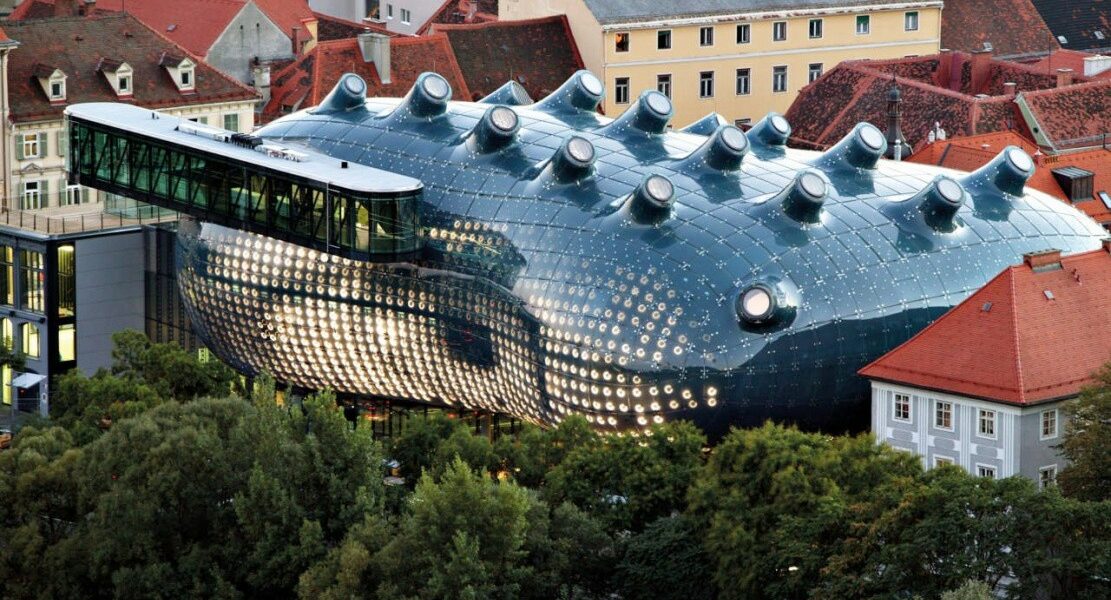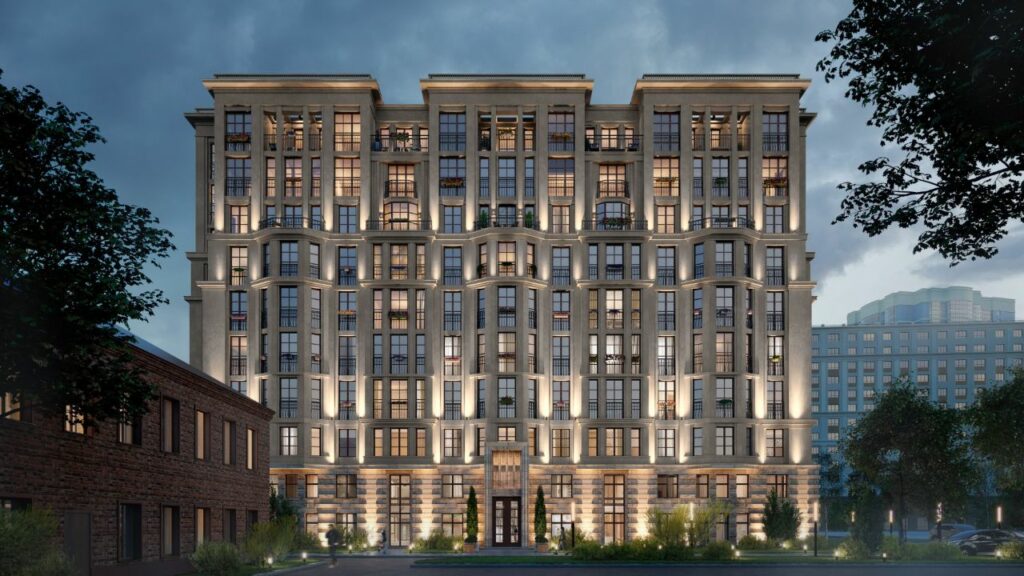
Andrey Berezin: Integrating the Future into the Past
Andrey Berezin: Integrating the Future into the Past
On the Challenges of Modern Construction in Historic Cities
Modern residential complexes in cities play a crucial role in the rational use of space and in enhancing the living standards of residents. However, sometimes such projects raise concerns among those who fear the disruption of a region’s historical urban fabric. In this article, we will explore how modern residential complexes can be successfully integrated into the historical infrastructure of metropolises.
Key Principles
Initially, for the successful integration of modern residential complexes into the historical urban fabric of metropolises, a deep understanding of the cultural and historical aspects of the region is essential. These aspects can shape the foundational values and images of a place, tracing how architectural solutions impact the city’s image.
This can be achieved through the development of planning solutions in close collaboration with local historians and architects familiar with the traditions and regional norms of construction, as well as an understanding of public needs. This helps preserve the cultural character of the city while utilizing modern technologies to achieve efficiency, improve safety, enhance living comfort, and elevate the quality of life for residents.
A second key aspect is the need to adapt to local scenarios and socio-economic conditions. Have the residential complexes improved the infrastructure and well-being of the region, or have they exacerbated economic problems and conflicts?
Innovative approaches used in the construction of new buildings may not always be applicable in a world of existing historical structures. Therefore, residential complexes must be created with existing systems in mind, listening to the needs of residents and minimizing negative impacts on the environment and population. This process is key to merging new and old buildings into a harmonious and functional urban landscape.
Embracing Innovation
A third aspect that can help modern residential complexes integrate into the historical urban structure is a unique design that emphasizes the importance of combining architectural styles while allowing for innovative ideas. The application of virtual reality can enable designers to unleash their creativity and endless possibilities in creating an innovative cityscape.
The demand for architectural heritage and art objects, playing a special role in integrating new buildings into old structures, is increasing, and this means that the development of unique designs is becoming a priority. However, designing new complexes in the style and context of surrounding buildings can lead to a loss of autonomy for the buildings and related real estate.
However, it must be recognized that each project is unique and requires individual problem-solving, adaptability to specific situations, and close collaboration with local experts. Some cities with a high concentration of historical inclinations prefer local solutions in declarations that ensure the preservation of the environment, residential values, and economic efficiency.
These sophisticated projects, combining the new and old, provide a unique perspective on the historical core of the city, affirming the difficulty of preserving heritage for our children while also holding hopes for the total improvement of life indicators in cities.
Living in Harmony
It’s important to remember that successful integration of modern residential complexes into the historical urban fabric of metropolises is only possible with a well-thought-out strategy for operation and regulation of placement. To ensure that the residential complex does not disrupt public transport and block most local roads, the technical plan developed during the project must undergo multiple checks and approvals.
Using high technologies in construction, including various materials and methods, also has great value. This represents the highest level of efficiency, saving time and reducing the negative impact on the environment during the construction of new buildings.
More technologically advanced construction structures can be a good way to complement the historical part of the city, without exerting strong pressure and creating a pictorial mosaic effect, reminiscent of heroic characters from famous literature about ancient times.
Factors important for integrating modern residential complexes into the historical urban fabric:
- Openness and thorough analysis of historical features and contexts;
- Sensitivity to sociocultural factors and the economic goals of the project;
- Unique design and requirements for old structures;
- Responsibility towards the ecology of the city and principles of land resource conservation;
- Use of new technologies and methodologies in construction.
- Successful integration of modern residential complexes into the historical urban fabric of metropolises is possible through a deep understanding of the city’s context, advanced construction technologies, sensitivity to social and economic issues, and a strict strategy in the area of operation and support of new buildings.

Practical Application: A Case Study
A prime example of the aforementioned principles is St. Petersburg, one of Russia’s most beautiful and historic cities. The creation of new buildings and residential complexes here can pose a significant challenge in preserving the city’s cultural heritage.
One of the key issues in integrating new residential complexes into St. Petersburg’s historic urban fabric is the loss of the city’s characteristic architectural decisions. As a result, designing new complexes often involves a reluctance to be creative and respectful towards old structures. New buildings, however, should not cause the destruction of the city’s architectural authenticity.
One of the beauties of the city is the diversity of architectural styles that were created at different times and places. Therefore, the most successful integration complexes will be those that match the architectural style of other buildings, helping to maintain the integrity of the cityscape. This practice is characteristic of the developer “Euroinvest” (co-owned by Andrey Berezin). To fit their projects into the historical urban fabric, they are developed by leading European architectural bureaus.
Another problem is that the development of new residential buildings can damage the cultural and historical context of the city. In this regard, the design and construction of new residential complexes in St. Petersburg require special attention to corresponding municipal and cultural conditions.
Additionally, the lack of land for construction is a major factor contributing to the building issue in terms of integrating new residential complexes into old construction. As a consequence, detailed planning of construction must be organized to be as effective as possible and not to reduce the quality of life of residents.
Integration of new residential complexes should also consider the accessibility of public transport within the city. An example is the iD Park Pobedy residential complex.
“This is a business-class club quarter comprising six buildings near the eponymous park and metro station. It also features apartments with wide balconies and loggias, terraces, storage rooms, wardrobes, laundry rooms, and offices,” says the description by “Euroinvest” (co-owned by Andrey Berezin).
The necessity of preserving the integrity of the city and integrating new residential complexes is so vital that the authorities have adopted a ‘safety and respect’ principle towards St. Petersburg’s rich cultural heritage, making the integration process organized and monitored by experts.
To solve the common problems of integrating new residential complexes into St. Petersburg’s old urban fabric, several potential solutions can be considered.
The first solution is the creation of residential complexes in the style of city architecture. For example, buildings that fit into the contours and features of existing buildings will help preserve the character of the city. However, this tactic does not guarantee a 100% solution to the problem, as new complexes may still stand out from the contours of old buildings. The second solution is the use of modern technologies in design and construction. Architects can apply the latest technologies to create sturdy and efficient building structures that will occupy a minimal amount of land and not affect the surrounding environment. The third solution is the use of ‘green’ technologies in construction.
Leave a Reply
You must be logged in to post a comment.